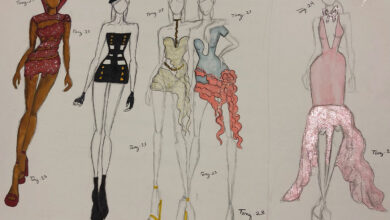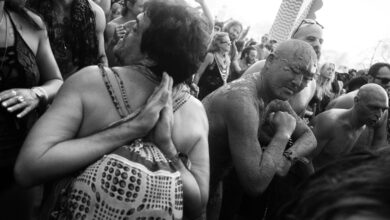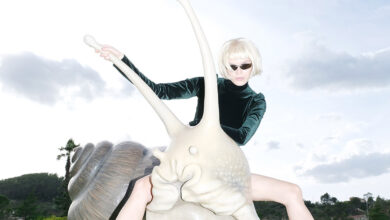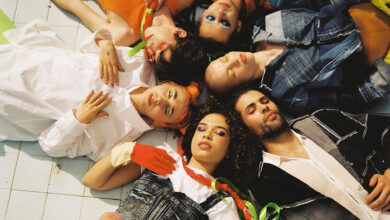The American Museum in Britain celebrates its 50th anniversary with a special exhibition that pays homage to the quintessential Hollywood icon, Marilyn Monroe.
Text by Anna Battista

Marilyn Monroe is unanimously considered as one of the greatest female stars of all time. The American legend is currently celebrated at the Bath-based American Museum with a special exhibition entitled “Marilyn – Hollywood Icon”.
Featuring costumes and memorabilia from the David Gainsborough Roberts Collection – the largest privately owned collection of items linked to Monroe – the exhibition allows visitors to discover the vulnerable star behind the glamorous legend.
Born in 1926, Norma Jeane Mortensen lived with foster parents as a child since her mother wasn’t able to look after her. Spotted by the photographer David Conover in 1945 when he was taking pictures of women war workers for Yank magazine at the aircraft factory where she worked, she signed with a model agency the following year, appearing on the covers of over 30 men’s magazines. In 1946 she signed her first studio contract with Twentieth Century Fox and, during a film career that spanned just 16 years, she appeared in 30 films becoming a legend.

The main room of the Monroe exhibition is dedicated to some of the most striking costumes she donned in her films. There is actually more than just one centre piece in this part of the exhibition: from the simple pink “wiggle” dress that emphasised her curves from Niagara (1952), Marilyn’s first major role that established her ‘blonde bombshell’ image, to the sensual sequined gown with plunging neckline and skirt split to upper thigh in Gentlemen Prefer Blondes (1953) and the chiffon cocktail dress with black beaded decoration from Some Like It Hot (1959) in which Marilyn sang ‘I’m Through With Love’ sitting atop a piano (director Billy Wilder had the actress hoisted onto the piano as her dress was too tight to climb into position without assistance…) and that won an Oscar to Hollywood designer Orry Kelly.
A selection of more sober, yet still glamorous black dresses – a chiffon négligée trimmed with a red rose appliqué and an unfinished hem from Niagara, a ¾ length ruched silk jersey cocktail dress with taffeta bow by Cecil Chapman (one of Monroe’s favourite designers) and a full length velvet evening dress from The Fireball (1950) – contrasts with the powder pink gown with a built-in boned leotard from There’s No Business Like Show Business (1954) with its pleated panels inserted later on to cover Monroe’s legs to reshoot scenes and allow the film to be screened in countries where female nudity was banned, and with the beautifully sumptuous beaded satin gown with cream chiffon bodice from The Prince and The Showgirl (1957).
There are plenty of accessories – including shoes by Pacelle and Salvatore Ferragamo and jewellery pieces from different films – and costumes to keep awake the interest of those visitors who may be into the film and fashion connection.
Among the others there are also the satin and lace fitted blouse and the green corset costume Monroe wore in Bus Stop (1956), her first film after studying ‘the Method’ with Lee Strasberg at the celebrated Actors’ Studio in New York (the corset is characterised by a fish scale-like motif and a net tail attached with poppers to make retakes easier); the bathing costume with a matching cap from There’s No Business Like Show Business designed by William Travilla and Charles LeMaire and the simple yet striking string bikini from The Misfits.

Fashion fans will find interesting the displays featuring costumes used for photoshoots including a lilac satin leotard trimmed at the hips with ribbon, worn for a feature by Richard Avedon homaging theatrical star Lillian Russel and a 19th century Renoir style satin and velvet bodice.

This part of the exhibition is also the one that reveals Monroe’s personality: in between calendars, photographs, keys to her dressing room, a Stetson signed by the entire cast of Bus Stop and other assorted memorabilia like a plastic doll representing Monroe, a decoration for a cake made for the Let’s Make Love wrap party, there are also humble household items, from souvenir coasters to lamp bases, an orange juice squeezer, her portrait by Cecil Beaton (two items that she took with her when her marriage to playwright Arthur Miller came to an end) and bottles of pills prescribed during the filming of The Misfits.

Among the rarest items on display there is a previously unpublished photograph of Gladys, Monroe’s mother, at 13. At 14 Gladys married a man over ten years her senior, who often beat her, and divorced from her husband in 1922. Monroe’s mother suffered a severe breakdown and was institutionalised and mental illness represented for the star a threat that often destabilised her life.
A silver ring given by Gladys to her youngest daughter “for luck” is also on view in the exhibition, together with assorted objects such as a dancing figure – a talisman Monroe kept most of her life – an astrological medallion from her teenage years and a medal of St Christopher, Patron Saint of Travellers, small items that prove that the star who donned diamonds on film sets, was probably more interested in small trinkets in her real life.
One of the few surviving copies of the Order of Service for her funeral and the eulogy read at Monroe’s funeral conclude this exhibition that pays homage to Marilyn Monroe as sex symbol, icon, legend and woman, and that could also be indirectly seen as a tribute to those skilled costume designers who contributed to the making of the “Monroe myth”.
“Marilyn – Hollywood Icon” is at The American Museum in Britain, Bath, UK, until 30th October 2011.








